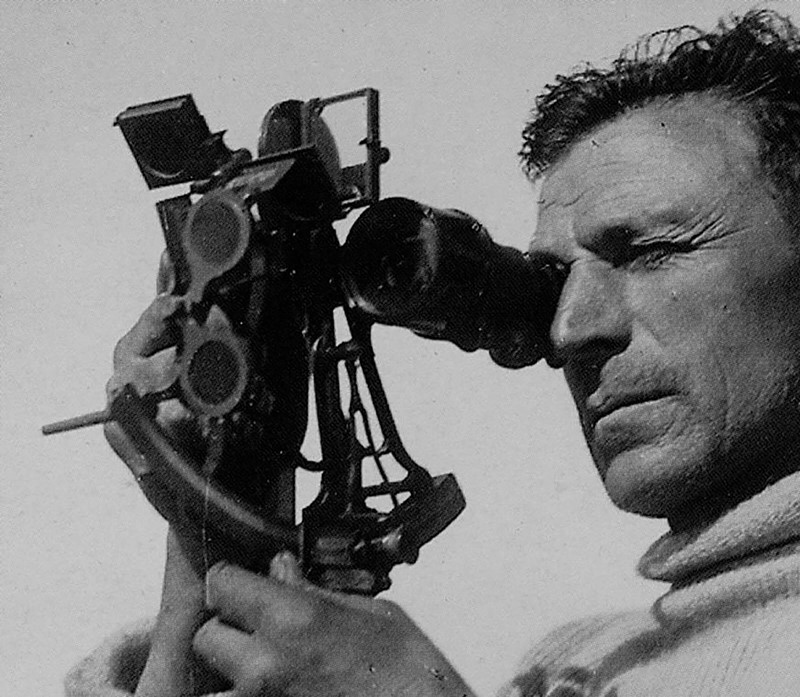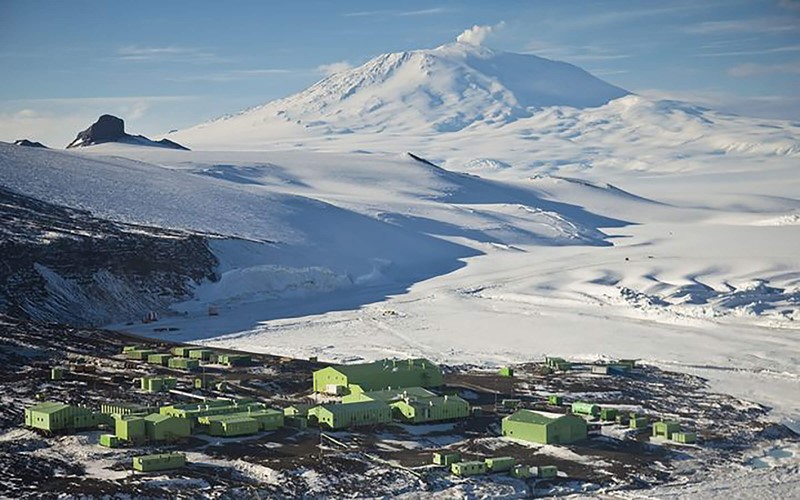Our Antarctic Connection Through Time
Ōtautahi Christchurch has a long history of involvement with Antarctica - from its contribution during the heroic age of exploration to its role today as one of only five international gateways to the icy continent.
The first humans to venture from New Zealand to the Antarctic were the intrepid 7th-century Polynesian navigators. According to Māori legend, Ui-te-Rangiora led a fleet of waka into the Southern Ocean until they reached “rocks that grow out of the sea”. It’s thought this was his description of ice floes and icebergs. Evidence exists of Māori living on Enderby Island, in the Auckland Island group, in the 13th or 14th century.
In the 1830s, sealers and whalers used Lyttelton as a base for trips to the sub-Antarctic Islands.
But it was a decision made by Captain Robert Falcon Scott at the turn of the 20th century that would first define Ōtautahi Christchurch as an Antarctic Gateway City.
Perhaps he was coerced to choose Christchurch over Melbourne by his cousin, Robert Julian Scott, who was head of the School of Engineering at Canterbury University. Maybe it was the construction of the Magnetic Observatory, which would be key to his expedition on the Discovery. Or it may have simply been that Christchurch was closer to his intended destination on the edge of the Ross Ice Shelf.
Above: Scott on the Discovery prepared for the long voyage South
Scott reported receiving a generous welcome in Christchurch and led two expeditions out of Lyttelton. The second of these, the Terra Nova, returned in 1913 bearing the tragic news of the death of Captain Scott and his Polar Party a year earlier.
The Nimrod Expedition that earned Ernest Shackleton his knighthood was farewelled from Lyttelton with great fanfare in 1908 by an estimated 50,000 Christchurch locals who were captivated by the adventurous spirit and courage of the men racing for the South Pole.
A few years later Shackleton had the foresight and good fortune to appoint Akaroa born Frank Worsley as Captain on the now legendary Endurance expedition. Among other amazing feats of Antarctic seamanship, it was Worsley’s remarkable navigation of a tiny 22-foot lifeboat across 1300 kilometres of icy storm-tossed ocean that is credited with saving all 28 lives of the expedition.

Above: Frank Worsley with his sextant
Following the rescue mission of Endurance’s Ross Sea Party stranded in Antarctica, the charismatic Irishman returned to Christchurch in 1917 to thank the citizens for their support of the New Zealand leg of the Endurance expedition. Shackleton planted an Oak tree in the grounds of the Girls Hostel that still endures today, now part of the Ara Institute of Canterbury.
Rear Admiral Richard E. Byrd's first Antarctic Expedition in 1929 marked the last use of Quail Island as a husky quarantine station. In 1955 as part of Operation Deep Freeze, Byrd assembled seven ships in Lyttelton to act as weather stations and rescue vessels for the first long haul flight to Antarctica, that departed from Christchurch on December 20. This aviation milestone flight meant that, for the first time in history, Antarctica was accessible in 10 hours, not 10 days or ten weeks.
Sir Vivian Fuch’s Commonwealth Trans-Antarctic Expedition of 1956-1958 aimed to complete Shackleton’s failed attempt to traverse the continent 40 years earlier. Sir Edmund Hillary led the Kiwi contingent on this expedition that also established Scott Base as New Zealand’s first research facility on the ice. Hillary and the New Zealand expedition stopped over in Christchurch, laying a wreath at the Captain Scott Statue in Oxford Tce as a salute to the pathfinder explorers of yesteryear.
Operation Deep Freeze and the US Antarctic Program, now managed by the National Science Foundation, have been a major part of the fabric of Christchurch since the establishment of McMurdo Station in 1955. Scott Base continued to grow, and the New Zealand Government bases its Science Research institution, Antarctica New Zealand at offices adjacent to the airport.
Above: Korea's Jang Bogo Station 2, Antartica
Since establishing the Mario Zucchelli Research Station in Terra Nova Bay in 1986, the Italian Antarctic programme has used Christchurch as their base to service the station. In 2014 the Republic of Korea opened their new Jang Bogo Station also in Terra Nova Bay, and joined New Zealand, USA and Italy in offices at Christchurch Airport’s International Antarctic campus.
The joint Italian/French station Concordia sees scientists from the French Antarctic Program coming through Christchurch en route to the ice. And with the renovation and modernization of Germany’s Gondwana Station in Terra Nova Bay in 2016, the Federal Institute for Geosciences and Natural Resources (BGR) uses Christchurch as their gateway to Antarctica. Chinese icebreaker research vessels also call at Lyttelton en route to and from the Antarctic.

Above: Scott Base framed by Mt. Erebus, Antarctica
The heroic explorers of the bygone eras would be amazed at the scale of Antarctic activity taking place in Christchurch today. Science was always present in the first expeditions to the ice, but a fragile planetary climate has elevated Antarctic research to a priority position in global science. Hundreds of scientists transit the Christchurch Gateway every year, supported by a huge range of businesses specialised and experienced in providing Antarctic and extreme environment trades and services.
The Port of Lyttelton remains a key logistics hub, but the steam and sail of old has been replaced with high tech, ice capable research and cargo vessels. Christchurch Airport has developed its own huge Antarctic apron, with over 100 flights annually carrying cargo and people to the ice every year.
Above: The New Zealand Defense Force loading the C130 ready for Antarctica
The University of Canterbury, where Christchurch’s Antarctic story began, runs an internationally recognised Antarctic education programme, appropriately called Gateway Antarctica. The University is also the proud home of the world secretariat of COMNAP, the Council of Managers of National Antarctic Programs.
The Antarctic Gateway stories of Christchurch’s future are yet to be written, but they will always be anchored by the city’s unbreakable connections to the explorers of the past, whose exploits continue to inspire the adventurers and scientists of today. Scott Statue